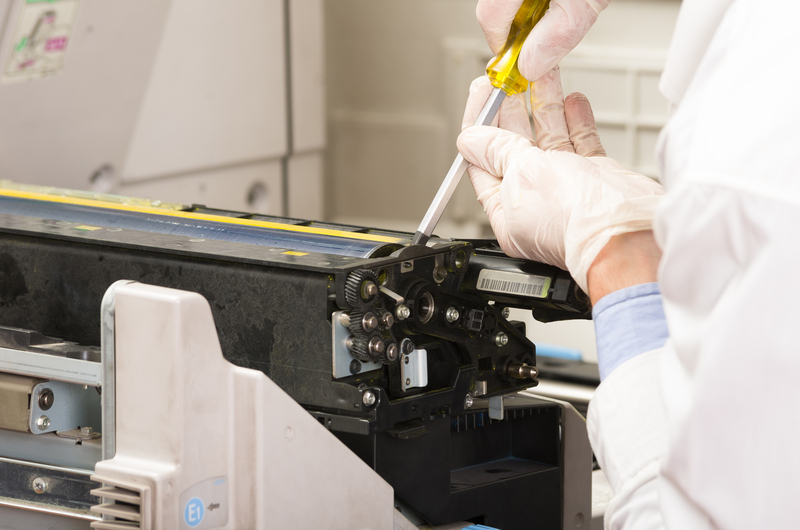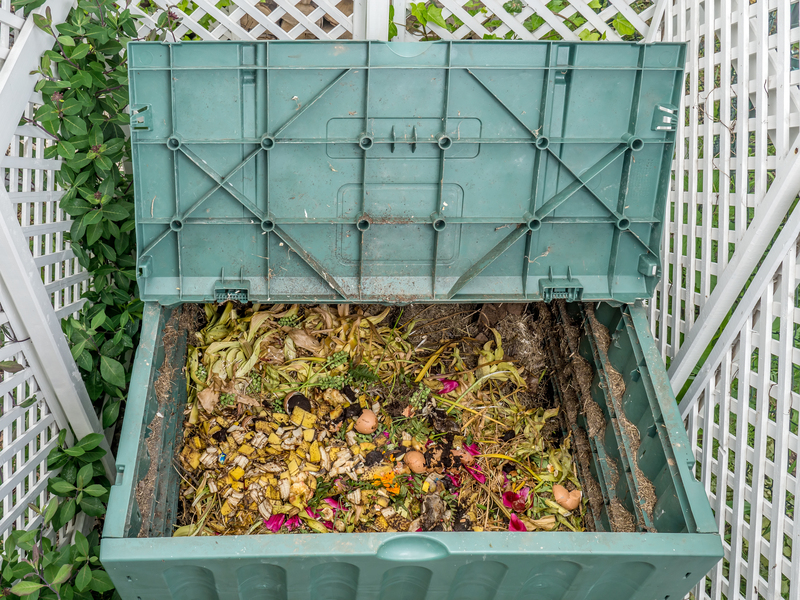A Guide to Encouraging Active School Participation in Recycling
Raising environmentally conscious students is crucial for promoting sustainability in our communities. One of the most effective ways to do this is through active school participation in recycling. Encouraging schools to implement recycling initiatives not only keeps campuses clean but also empowers students to become lifelong stewards of the environment. This comprehensive guide explores strategies, benefits, and practical steps for getting everyone at school involved in recycling programs.

Why Does School Recycling Matter?
Schools are major generators of waste, from paper and plastic to electronics and food scraps. Implementing robust recycling programs does more than just divert waste from landfills; it educates the next generation about sustainable habits and the importance of protecting our planet.
- Environmental Impact: School recycling reduces greenhouse gas emissions and conserves valuable resources.
- Educational Value: Students learn practical skills related to environmental stewardship and responsibility.
- Community Influence: Successful school programs often inspire families and communities to recycle more actively.
- Cost Savings: Recycling can lower waste disposal costs for schools over time, making it economically advantageous.
Clearly, active participation in school recycling has far-reaching positive consequences for students, staff, and the broader community.
Understanding School Recycling Challenges
Before diving into solutions, it's important to consider common challenges that schools face regarding active recycling:
- Lack of awareness about what can and cannot be recycled.
- Insufficient recycling bins or poorly labeled containers causing contamination.
- Limited resources or budget constraints for program implementation.
- Inconsistent participation from students, teachers, and staff.
- Absence of monitoring or feedback mechanisms to track progress.
Addressing these barriers head-on is essential to fostering active school engagement in recycling initiatives.
Building the Foundation: Steps to Launch a School Recycling Program
1. Form a Green Team
Assembling a dedicated "Green Team" is the first step in encouraging widespread participation in recycling at schools. This group should include students, teachers, administrators, custodial staff, and even parents. Their roles:
- Identify and assess recycling needs.
- Develop goals, guidelines, and a timeline for implementation.
- Lead awareness campaigns and peer-to-peer education.
- Monitor progress and suggest improvements.
2. Conduct a Waste Audit
Before starting, analyze the types and quantities of waste generated at school. A simple waste audit helps:
- Identify what materials are disposed of most frequently.
- Determine which recyclables are currently being missed.
- Tailor the recycling program to the school's specific needs.
3. Set Clear Goals and Guidelines
Setting specific, measurable goals is essential for active engagement. For example:
- Reduce landfill waste by 20% within one school year.
- Achieve 100% classroom participation in recycling activities.
- Divert all paper and cardboard from trash bins.
Clear guidelines on what items are recyclable and how to sort them should be provided to every classroom and office.
Creating a Recycling-Friendly School Environment
1. Place Accessible Bins
For effective recycling adoption in schools, recycling bins must be:
- Clearly labeled in multiple languages and with pictures.
- Located next to garbage bins in classrooms, cafeterias, and hallways.
- Emptied regularly by trained staff or student volunteers.
2. Use Eye-Catching Signage
Attractive and informative posters help remind and educate students about recycling best practices. Consider:
- Color-coding bins and signs for different materials (paper, plastics, cans, electronics).
- Displaying statistics on how much waste has been diverted.
- Posting fun, motivational slogans and environmental facts.
3. Integrate Recycling into the Curriculum
Make recycling relatable by embedding environmental education in lesson plans across subjects:
- Science classes can explore the benefits of recycling and life cycles of materials.
- Art classes can use recycled materials in creative projects.
- Math classes can calculate recycling rates and environmental impacts.
4. Involve the Entire School Community
Encourage everyone--students, faculty, custodians, and parents--to take ownership of the program. Ways to build buy-in:
- Have regular "recycling challenges" between classes or grades.
- Invite guest speakers or organize field trips to recycling centers.
- Send newsletters home educating families about recycling and sustainability.
Motivating Students for Active Participation in Recycling
1. Make Recycling Fun and Competitive
Gamifying recycling helps foster greater excitement among students. Try:
- Classroom competitions with prizes for most recyclables collected each month.
- A points or reward system for individuals who demonstrate positive recycling behaviors.
- School-wide "zero waste" weeks or themed recycling events.
Friendly competition can significantly boost school-wide recycling rates and active engagement.
2. Recognize and Celebrate Success
Recognition motivates continued effort. Publicly acknowledge:
- Green Team members and standout recyclers during assemblies or in morning announcements.
- Classes or groups that meet or exceed waste reduction goals.
- Schools can also create certificates, eco-badges, or sustainability awards.
3. Use Student Leaders as Role Models
Empowering student leaders is a proven strategy for encouraging peer-to-peer participation in recycling. Appoint "Recycling Champions" or "Green Ambassadors" to:
- Educate classmates about proper recycling and why it matters.
- Organize and supervise classroom and cafeteria recycling.
- Communicate feedback to teachers and the Green Team.
Engaging Staff and Custodians in School Recycling
For any school recycling initiative to succeed, engagement of teachers and custodial staff is key. Here's how to ensure their participation:
- Hold periodic training sessions explaining proper sorting and collection procedures.
- Solicit feedback on potential improvements or logistical issues.
- Delegate responsibilities for checking bins and providing recycling supplies.
Collaboration between all staff members ensures a seamless, school-wide approach to recycling participation.
Expanding Beyond the Basics: Advanced School Recycling Ideas
1. Organize Special Recycling Drives
- Electronics Recycling: Collect old smartphones, batteries, or computers for proper disposal.
- Book and Uniform Swaps: Reduce waste by reusing school supplies and clothes.
- Holiday-Specific Drives: Gather used holiday cards, wrapping paper, or decorations for recycling.
2. Composting and Food Recovery
Organic waste is a significant portion of school refuse. Implementing composting programs in conjunction with recycling can help:
- Diversion of food scraps and yard waste from landfills.
- Creation of nutrient-rich compost for school or community gardens.
- Instructional opportunities related to biology and sustainability.
3. Collaborate with Local Partners
Partner with municipal recycling agencies, local businesses, or environmental organizations to expand resources and impact:
- Gain access to recycling bins, educational materials, or guest speakers.
- Participate in community-wide recycling challenges or cleanup events.
- Leverage grant opportunities and donations for program growth.

Tracking Progress and Improving Your School Recycling Program
1. Measure and Report Outcomes
Track how much material is collected, waste diverted, and goals achieved. Share reports with students, staff, and families to build a sense of accomplishment and transparency.
2. Solicit Feedback and Innovate
Regularly ask for input from all participants--students, staff, and parents--on how to make the program even better. Stay updated on new recycling technologies and trends to keep your initiative fresh and effective.
3. Celebrate Major Milestones
Mark major achievements with assemblies, certificates, news articles, or school-wide celebrations to re-inspire participation and reward collective effort.
Conclusion: Cultivating a Lasting Culture of Active Recycling in Schools
Building a successful recycling program requires determination, creativity, and teamwork. By following these strategies, your school can transform recycling from a forgotten habit into an integral part of campus life. The benefits go far beyond just reducing waste--they include educating responsible citizens, fostering community pride, and paving the way for a more sustainable future.
Active school participation in recycling is more than just a trend--it's an investment in our environment and the next generation. Together, let's create a greener, cleaner world beginning in our classrooms today.